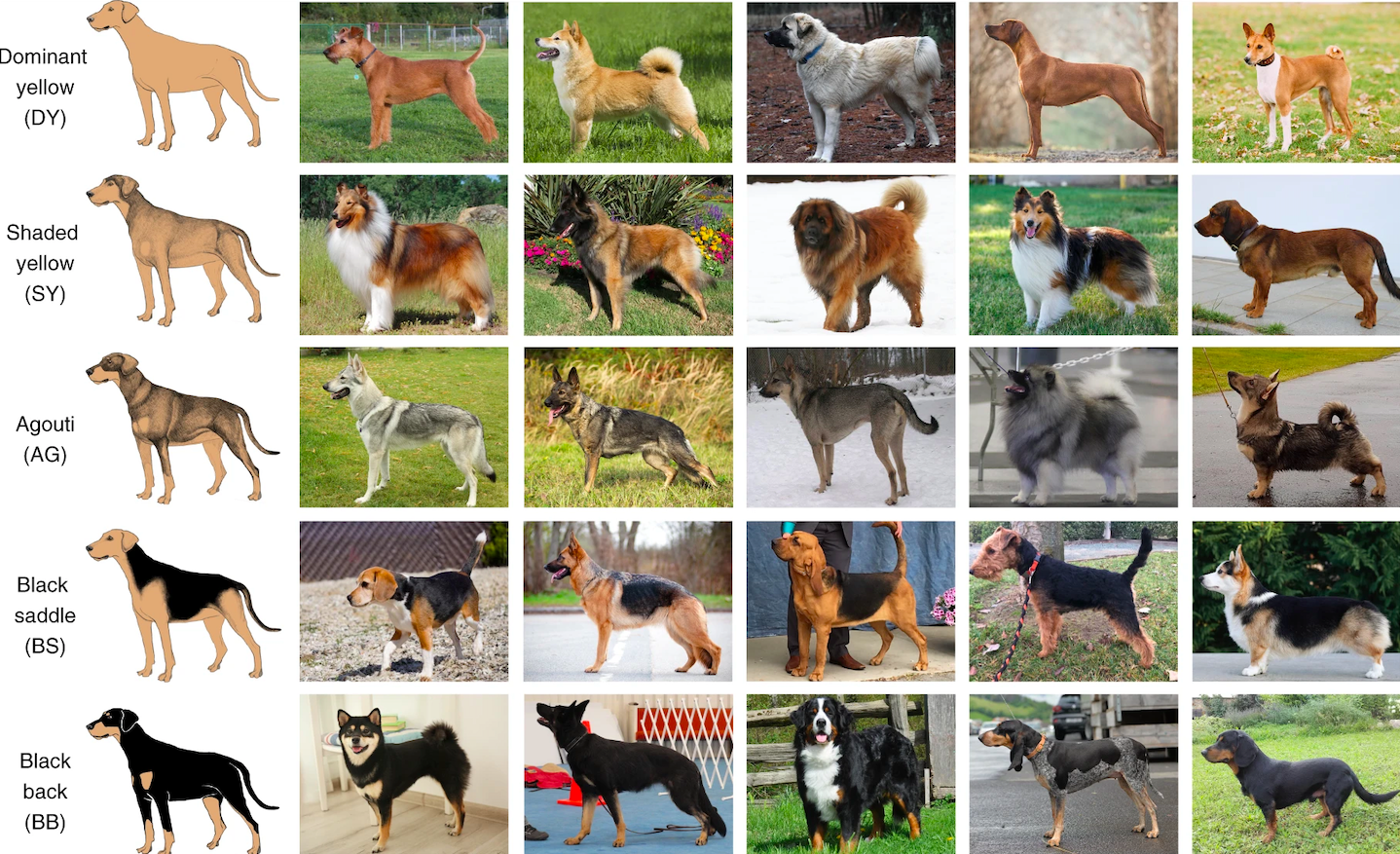A recent genetic analysis of dog coloration found that mutations in one gene are responsible for five distinctive coat patterns in dogs. These patterns manifest in iconic breeds like the corgi and the Bernese mountain dog, and a team of researchers were even able to trace one coat type, called dominant yellow, to an extinct canid that split from Pleistocene wolves 2 million years ago.
“While we think about all this variation in coat colour among dogs, some of it happened long before ‘dogs’ were dogs. The genetics turn out to be a lot more interesting because they tell us something about canid evolution,” said Danika Bannasch, a geneticist at the University of California Davis, in a news release. Bannasch is the lead author of a new study on the gene variants, published last week in Nature Ecology and Evolution.
To understand when the mutation came about and which canids had the mutation and which did not, Bannasch’s team looked at eight still-living species, including domesticated dogs and wolves. Those two species make two different types of pigment: eumelanin (black) and pheomelanin (yellow). Those pigments can create five coat pattern types in dogs, depending on the unique mutations in an individual dog: dominant yellow, shaded yellow, agouti, black saddle, and black back. You can see how they manifest in different breeds below.

The different coats are produced by varying mixtures of the two pigments, which are decided by variations in the agouti signalling protein. In this case, agouti refers to hair that has alternating dark and light colours. The agouti gene controls how black pigment is distributed across a number of mammals, including hares, horses, and mice.
The researchers found that two regions of the gene need to mutate in order to cause the different coat colour patterns. Of course, any two dogs that breed can have offspring with a variety of these coat patterns, depending on the parents’ haplotypes.

Interestingly, the dominant yellow coat type is the most ancient. The team determined that the genetic combination that produces the coat is shared with Arctic white wolves and ended up in dogs through a divergence in the evolutionary tree over 2 million years ago, before modern wolves even arose. The dominant yellow coat is found in many breeds, including Irish terriers, bull mastiffs, shiba inu, chow chows, sloughis, basenjis, and Rhodesian ridgebacks.
When you consider that dog domestication can only be traced back to about 30,000 years ago, in all likelihood a timestamp more recent than Neanderthal extinction, it shows how long these coat differences have been floating around. And with one sample from the team’s work dating to a 9,500-year-old dog with a black pattern, it gives geneticists a better idea of what some of the earliest domesticated dogs may have looked like.
